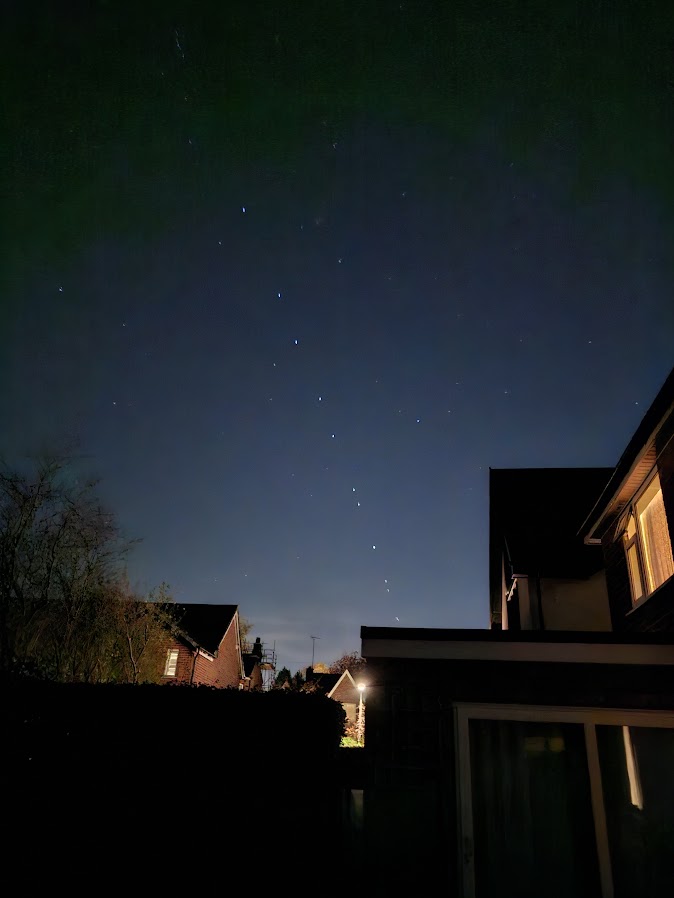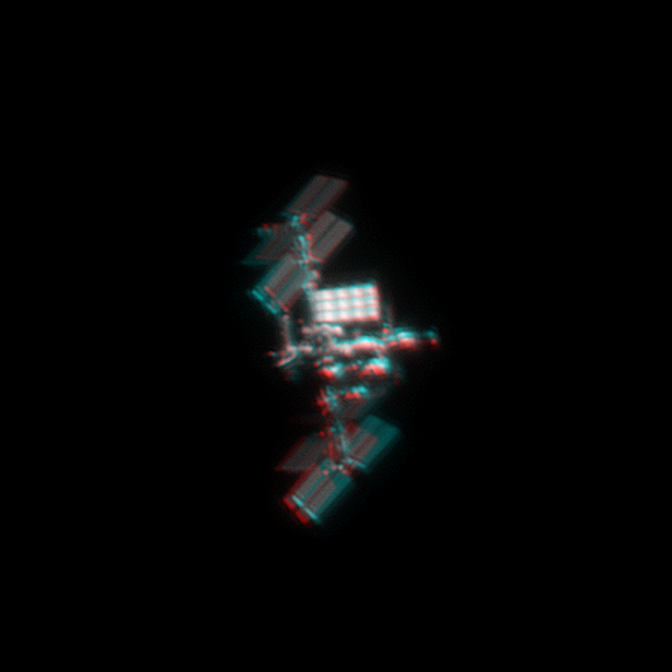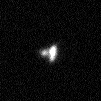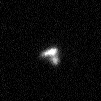2024
StarLink satellites launched on 15/10/2024 rising at 20:00 on 21/10/2024
January 2022
Observation of James Webb Space Telescope (JWST). I obtained co-ordinates from JPL Horizons website and then took repeated 30 second exposure images for about 1 hour using the LX200 at f6.3 and a UV/IR cut filter with the Atik 314+ camera.
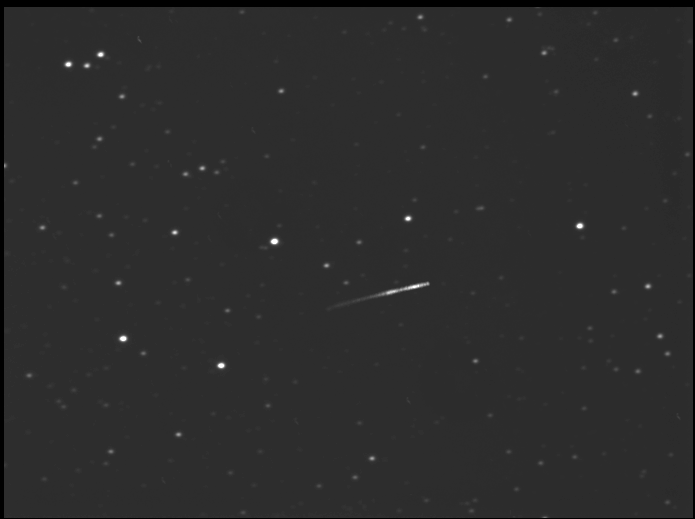
It is obvious from the image that the brightness of JWST varied over the hour so here is a plot of its relative brightness over the period compared to one of the field stars. The variation is probably due to a slight change in viewing angle and the highly reflective sun shield.
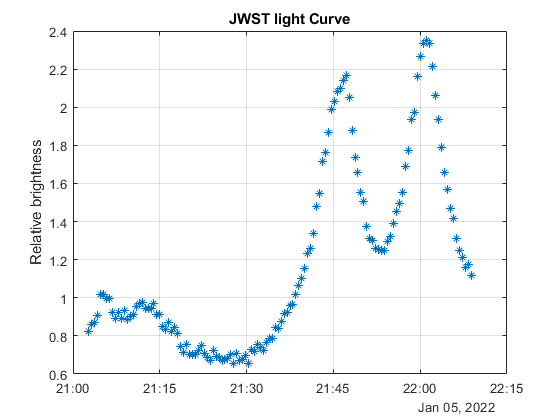
According to JPL the distance to JWST at the time was 934,990km (0.00625au where 1 au= 149597870.700 km). Simultaneous observations by Mike Tyrrell at a location 17.02km away showed some parallax. The cross and circle represent 2 frames taken at the same time and based on similar pairs of frames the parallax is 4.03 arcseconds which gives a distance of 852,000km.
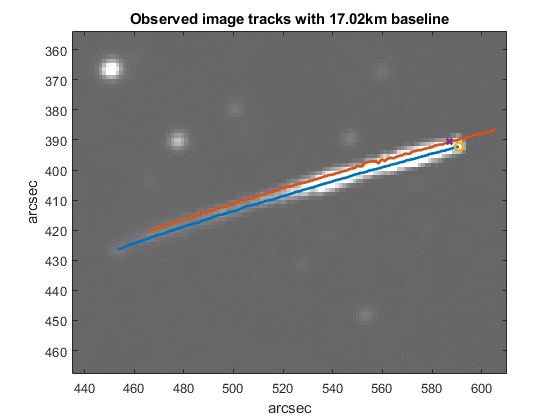
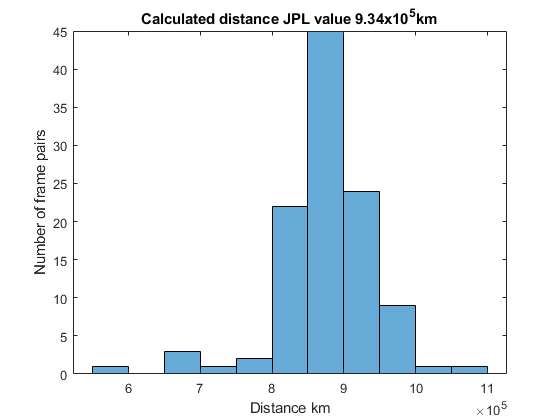
The mean calculated distance is a bit low at 852,000km an error of 80,000km but this represents a parallax error of only 0.35 arcseconds.
September 2021
ISS in 27/09/2021. The Canada Arm and new panels are visible
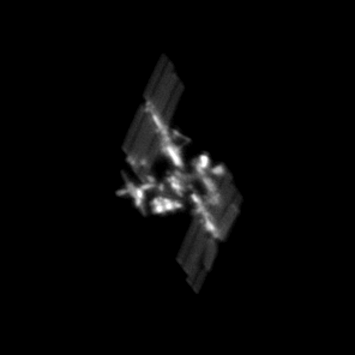
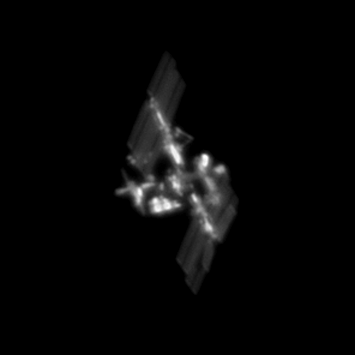
April 2021
USA 32
An interesting observation of this satellite showing periodic variation of brightness . Taken with the LX200 at f10 and the ZWO ASI 290 MM camera. The animation is taken from 500 frames at the central peak of the light curve. The frequency analysis is based on the entire light curve. The highest peak in the frequency is at 4.8Hz but there are multiple harmonics. The frame rate is 80 per second.
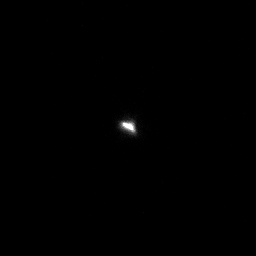
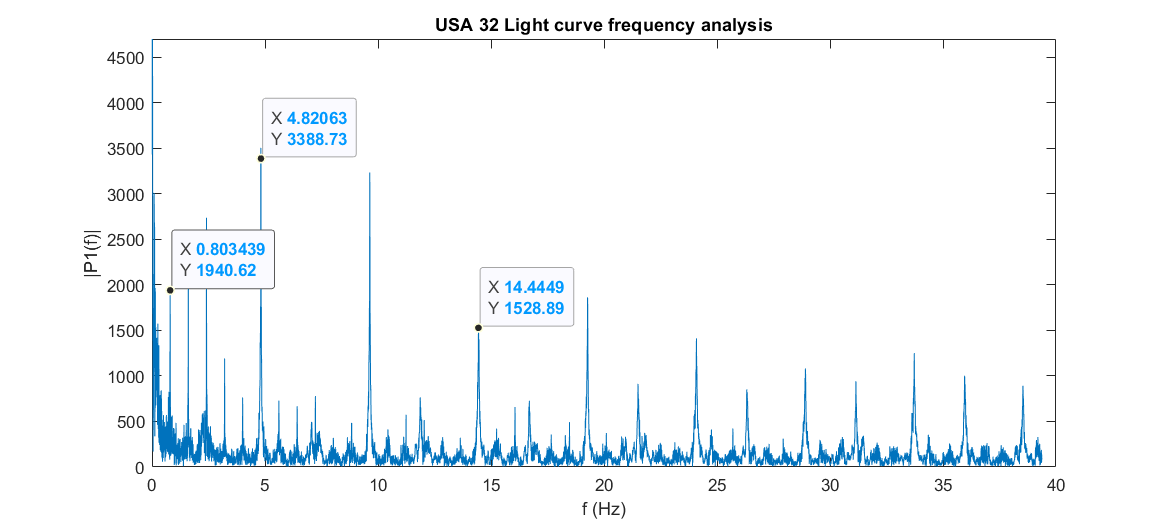
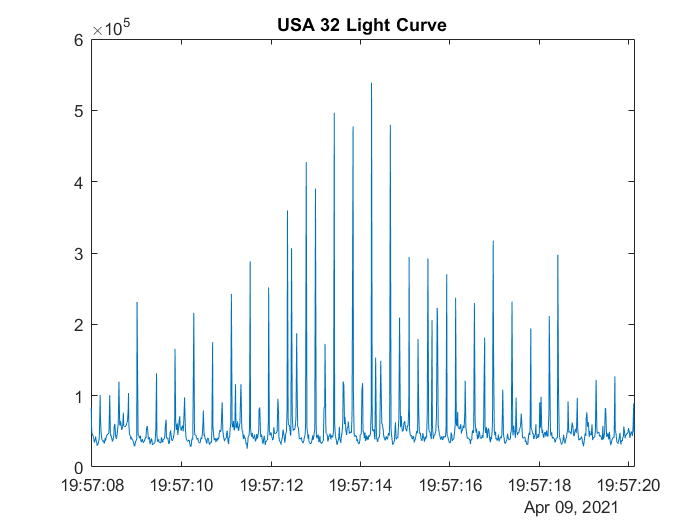
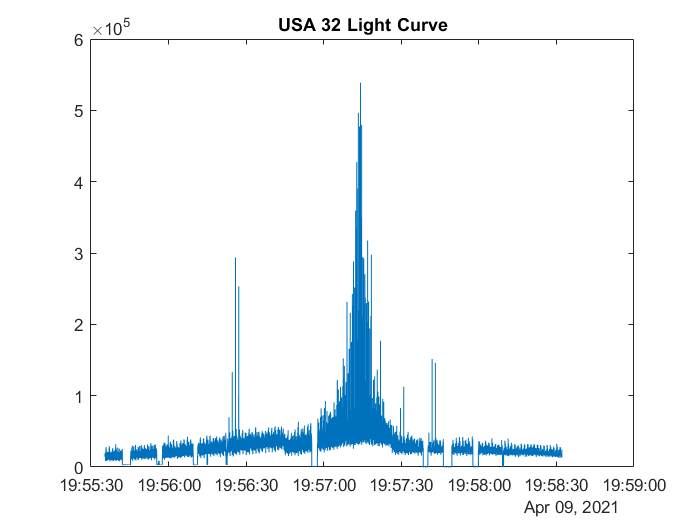
May 2020
The ISS in 3D based on 2 images taken 7 seconds apart on 24/05/2020. LX200 at f10 with the ZWO ASI 290MM and Baader IR pass filter. Exposure 5ms. Each image a stack of 40.
March 2020
ISS 26/03/2020
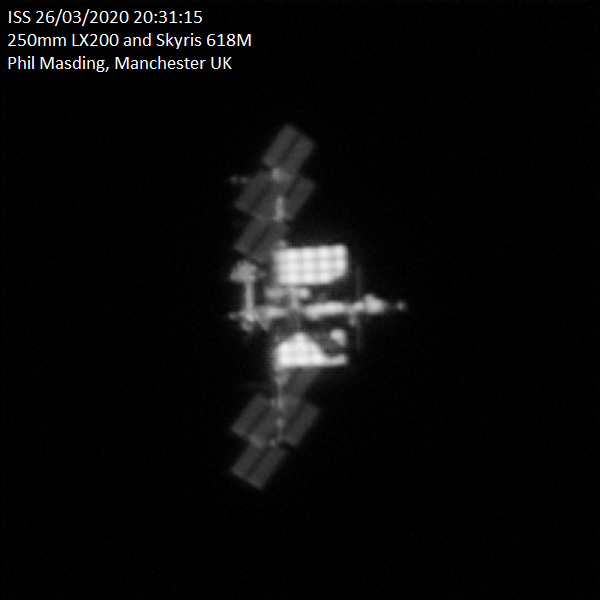
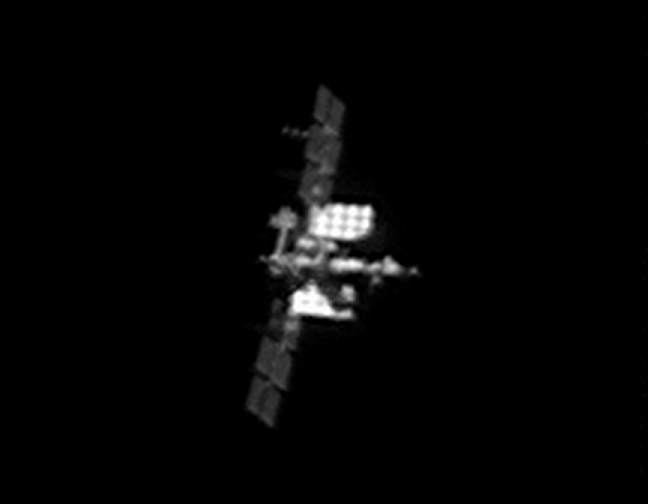
February 2019
This image shows the ISS passing through Aries on 02/02/2019 at 18:44GMT. A second satellite also appears following a similar track to the ISS. This satellite flashes regularly but then stops towards the edge of the field. There are fainter flashes between the main ones. I suspect this is an old out of control satellite which is tumbling through space but I have yet to identify it. A third much fainter satellite follows a path perpendicular to the ISS. Getting this image was shear luck, I had intended to image the ISS passing through the Hyades but the only cloud in the sky parked itself there for about 15 minutes just at the wrong time. Details: Canon 450D at f5.6 and 55mm, ASA400, 2 minute exposure. Ioptron Sky Tracker.
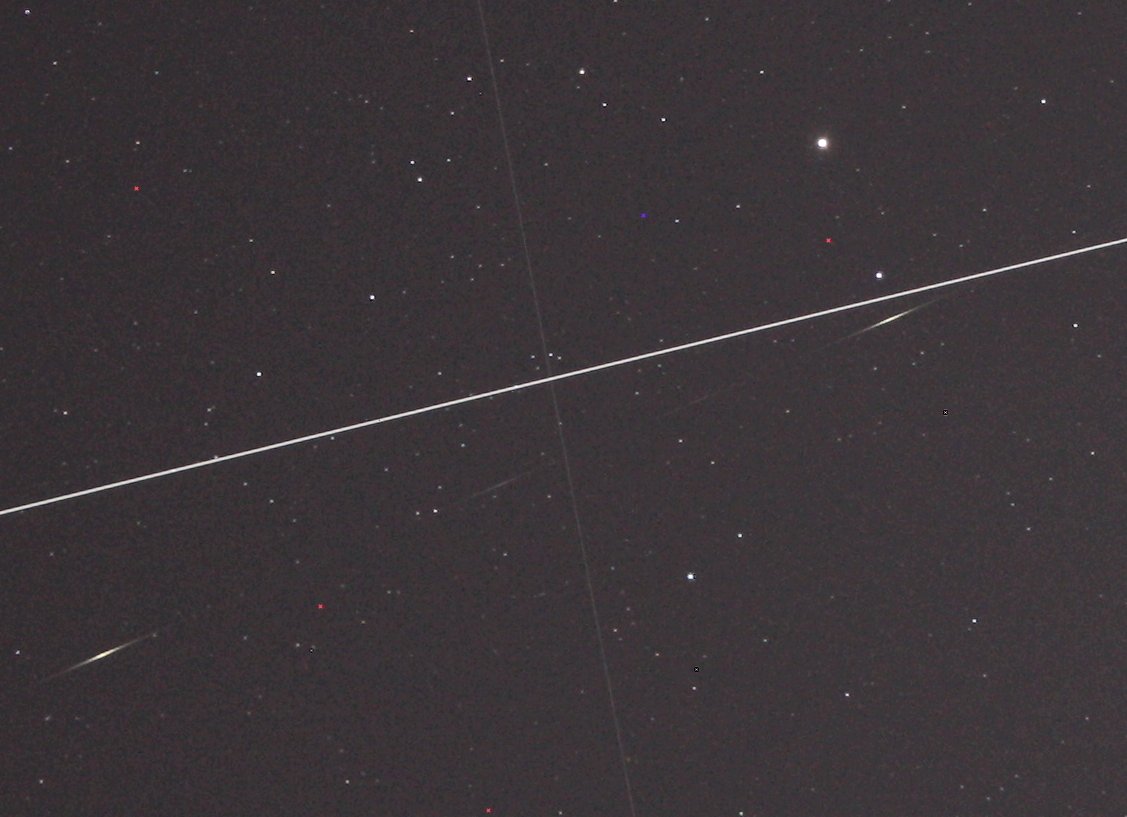
For the best view click on this image and select the full resolution version
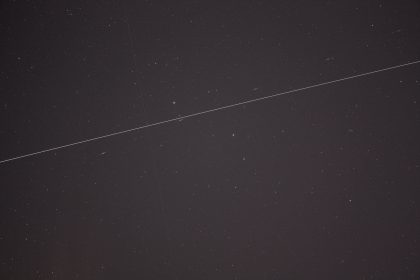
Transit of the Sun
ISS transit of the sun taken from Llay in North Wales on 24/06/2018 at 11:00. I used an ETX 70 telescope and a Skyris 618M camera at 1/10000 second exposure. The composite uses an image of the ISS every 1/15 second overlaid on a single relatively sharp frame. The inset is a stack of 20 frames processed in Registax.
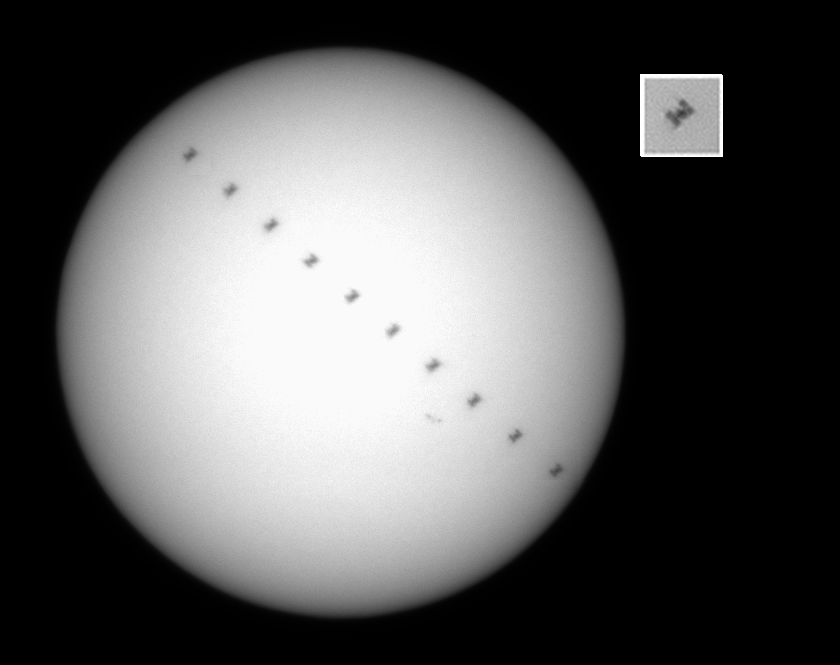
Also a video at half normal speed.
Video of a pass
This is a video of the International Space Station as it orbited over Manchester. Taken with a 10″ LX200 and a Phillips Toucam in 2009
IGS 9 Satellite 02/08/2019
USA 245 07/04/2019
Skyris 618m.


